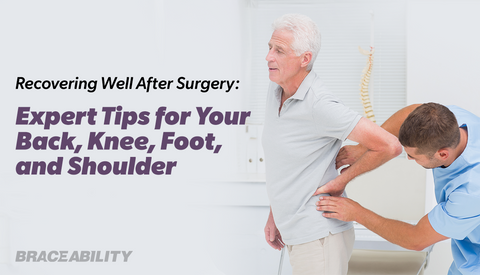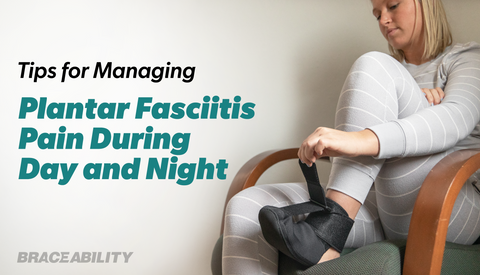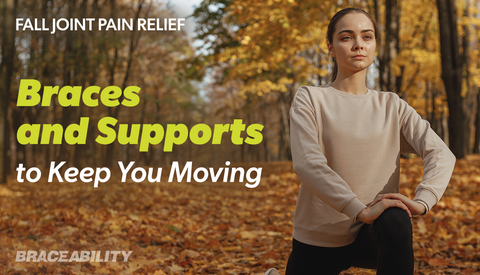Vulvar Varicosities: What is it and Why Does it Happen?
What are Vulvar Varicosities & Who’s at Risk?
Pregnancy is such an exciting time, but unfortunately, that doesn’t mean there won’t be a range of aches, pains, and other side effects. There are many common symptoms that we know can come along with pregnancy. Whether it be nausea, food cravings, lower back pain, or the constant urge to pee, these symptoms are all expected and widely known. However, in some cases, there can be pain and pressure experienced in the vulvar area that comes along with pregnancy. Vulvar Varicosities are varicose veins at the outer surface of the female genitalia (vulva), the swelling and lengthening of those veins, which can cause pain and itchiness.

While experiencing pregnancy, your body goes through a lot of changes. Vulvar varicosities may seem frightening at first and while you may be hesitant to reach out to your doctor out of fear or embarrassment, don’t fret. These veins are actually widespread and essentially harmless; there is no reason to be alarmed! Keep reading to learn more about vulvar varicosities including causes, symptoms, prevention, and treatment methods.
Help, I Think I Have Vulvar Varicosities but I am NOT Pregnant!
If you are reading through this information and panicking because you are experiencing symptoms that line up with vulvar varicosities and are not pregnant, do not worry! Although it is rare, it is possible to be diagnosed with vulvar varicosities and not be pregnant. Those at risk include obese and or older-aged women. You can still follow the same lifestyle changes recommended, just as a pregnant woman would. If they do not go away after making those changes, you may need to speak with your doctor about the right choice for you, especially if you are experiencing painful symptoms.
Understanding Varicose Veins
So, now that you know that vulvar varicosities consist of varicose veins, you may be wondering what exactly those varicose veins are. Varicose veins are enlarged veins that can occur anywhere in the body and are often a result of increased pressure to the area involved. More often than not, they occur in the legs.
However, in this case, they are occurring in the vulva or perineum (the area between the anus and the vulva). For a lot of people, varicose veins are more of a cosmetic concern and it is more the look of the veins that are troublesome, rather than actual painful symptoms.
Key Vulvar Pain Causes
Pregnancy, in general, is what will put you at risk for vulvar varicosities, however, the varicosities are caused by the increase in the blood volume to the pelvic region during that pregnancy. The varicosities may also be caused by the decrease in how quickly your blood flows from your lower body to your heart, as well as the increase in hormone levels during your pregnancy. Having pelvic varicose veins will also increase your chances of developing vulvar varicosities. There is also the factor of your genetics. Your genes are one of the main factors that decide whether or not you will develop vulvar varicosities, or be one of the lucky women who are able to avoid them.
What Makes Pregnant Women Most At Risk for Varicosities?
There are a number of reasons why pregnancy puts women at an increased risk for varicose veins in the vulva. Changing hormones and the extra pressure brought on by pregnancy weight gain both play a role in the development of varicose veins.
When a woman becomes pregnant, there is an elevated level of progesterone, which is the hormone that is responsible for maintaining the pregnancy and preparing for milk production. There is a side effect that comes along with this, which causes the blood to pool up in your lower body. As your baby and your body grow, blood flow only continues to be restricted more and more. This restriction of blood flow is what essentially causes the varicose veins both in the legs and the vulva.
Identifying Vulvar Varicosities: Can You See Varicose Veins?
It is very possible to have vulvar varicosities and not even know it. Oftentimes when you are pregnant, it can be difficult to see the vulva, let alone identify changes to it. If you aren’t experiencing any symptoms, you may want to pay attention to the visible changes that vulvar varicosities cause. Many women never receive a diagnosis of vulvar varicosities, simply because they cannot see or feel the varicose veins in their vulva.
Vulvar varicosities occur on the labia major and minor. In other words, the lips and skin fold of the vulva. Some visual symptoms to keep an eye out for include veins that are either soft and purple or blue in color, and/or veins that bulge out of your skin and appear to be twisted.
Another way to identify varicosities of the vulva is by the main symptoms. There are some cases where you may have vulvar varicosities and experience no symptoms at all. However, in the result that you do the most common symptoms are as follows:
- The feeling of fullness or pressure in the vulvar area
- Vulvar swelling and discomfort.
- Visible twisted or swollen veins
- Pain in or around the genitals
- Pain that gets worse after standing, sexual activity, or physical activity
- Dilated vessels bulging - they may look bluish and feel bumpy
- Itchiness
You should see a doctor immediately if you develop signs or symptoms of a blood clot. This is very uncommon with vulvar varicosities but is something to be aware of. If your skin becomes red, swollen, and painful, see a doctor right away.
Top 4 Tips & Tricks to Relieve Vulvar Varicosities Pain
-
Use a Support Garment, or Try Cold Compress Therapy
Support belts and garments can be a huge help when it comes to relieving vulvar pain. The Pelvic Pro belt will provide natural relief from vulvar varicosities, as well as a number of other related conditions.
On top of the use of a support belt, try applying an ice pack to your vulvar tissues for a few minutes several times a day to help ease the pain and reduce swelling in the area.
-
Take Time to Relax
The pain will only get worse if we push our bodies too far. One of the main factors that can make the pain worse is standing and sitting for long periods of time. Controlling the length of time you spend standing or sitting can dramatically help your pain.
Another great way to relax is with a nice, warm bath. To help with itching, try taking a bath using a gentle foaming solution without soap and apply a small amount onto your vulva.
-
Remember to Elevate Daily
Elevating your pelvis and legs for a few minutes each day will make a huge difference. Lie on your back with a few pillows or a pelvic wedge under your bottom, which will help reduce swelling and improve circulation. You can include an extra pillow under your right hip so you are slightly tilted to your left.
You can also perform pelvic floor exercises in this position to help facilitate blood flow and circulation. This will be especially beneficial if you have a job where you are on your feet most of the day.
-
Avoid Additional Straining & Pressure
Pain and swelling caused by pressure to the major vein called the inferior vena cava is what causes varicose veins. It’s important to not add to this pressure. Avoid wearing high heels or any shoes that are uncomfortable and put pressure on the lower body. You should also avoid constipation, struggling to produce a bowel movement puts added strain and pressure onto your veins.
At-Home Treatment to Ensure You Avoid Vulvar Varicose Pain
Vulvar varicosities typically go away within the first month after giving birth, which is why the best treatment for the pain will include at-home treatment. Your health and diet will play a big role in ensuring you are able to prevent the varicose veins from getting any worse and reducing the pain you currently have. Try out these exercises and diet changes in order to relieve and prevent vulvar pain.
5 Pelvic Floor Pregnancy Exercises to Help Relieve Vulvar Varicosities Pain
Try these pelvic floor pregnancy exercises to get the blood circulating and relieve that pain you may be experiencing from your vulvar varicosities:
- Kegels
Kegel exercises set your focus on tightening and holding the muscles that control urine flow. To do this, sit in a comfortable position and visualize the muscles that control urine flow. Tighten these muscles as much as possible.
- Squeeze and Release
This rapid movement will build up the pelvic floor muscles to respond quickly. Sit in a comfortable position and visualize the pelvic floor muscles. Squeeze those muscles as quickly as possible and release them. Rest for 3-5 seconds and repeat 10-20 times.
- Bridge
The bridge pose can be a great help in strengthening your pelvic floor muscles. Lie down on your back, bend your knees and place your feet flat on the floor, hip-width apart. Contract your buttocks and pelvic floor to lift your buttocks several inches off the ground. Hold this position for 3-5 seconds and release. Repeat up to 10 times.
- Squat
Along with the bridge pose, squats can also help strengthen your pelvic floor muscles. Stand with your feet hip-width apart and keep them flat on the floor. Bend at your knees and slowly bring your buttocks as low as you comfortably can. Keep your back straight and lean slightly forward. Repeat 10 times.
- Cow Cat Pose
This is a yoga pose that can significantly help stretch and strengthen your pelvic floor muscles. Begin with your hands and knees on the floor. Make sure your knees are under your hips and your wrists are under your shoulders. This is your cow pose. Take a big deep inhale. On the exhale, round your spine up towards the ceiling. This is your cat pose.
The 6 Best Foods to Help with Varicose Veins:
Your diet can dramatically affect your health. Depending on what you are eating, there are a variety of ways you can help avoid or minimize your varicose veins or vulvar varicosities:
- Chia seeds or flax seeds
These types of seeds are high in fiber, which can help improve your heart health and digestive functions. This will keep you from bloating and avoid the increased pressure put on your abdomen and legs. These seeds will also help you avoid constipation.
- Blackberries
Blueberries are a high-antioxidant food. This can help strengthen your veins, improve arterial health and help to fight inflammation. Blueberries are also protective against blood clots.
- Herbamare Low Sodium
This is a good replacement for salt. Salt is actually linked directly with water retention, which can be disastrous for our vein health. Moderating your salt intake is crucial for your overall circulatory health.
- Beets
Beets help to reduce the levels of amino acids that can damage blood vessels. It also contains nitrates that help naturally improve your blood circulation.
- Ginger
Ginger can help improve circulation and dissolve fibrin in blood vessels. Fibrin is what causes veins to become hard and lumpy.
- Avocados
Packed full of important minerals, avocados help prevent blood clots and varicose veins.
Will My Vulvar Varicosities Ever Go Away?
A fear that is often associated with vulvar varicosities is that they will never go away. Fortunately, in most cases, vulvar varicosities go away on their own within about six weeks after delivery. After giving birth, the symptoms should go away within a short amount of time.
It is important to note that there are some rare cases in which vulvar varicosities do not go away after pregnancy. First, you should go make a visit to see your doctor. There are some surgical procedure options available in order to relieve the pain and or help speed the process of the removal of the varicosities:
- Vein Embolization
This is a surgical procedure where a catheter is used to close the weakened vein with a coil
- Sclerotherapy
This is an injection into the vein with a solution that blocks blood flow. The goal of this treatment is to reduce pain and swelling
- Echo Sclerosis
This is an advanced and expanded version of Sclerotherapy, which uses ultrasound guidance
- Phlebectomy
This treatment works to remove the affected veins, which will require a few incisions made on the skin’s surface
Which Treatment is Right For Me?
Finding the best vulvar pain treatment for you will ultimately depend on what your pain levels are and the symptoms you are experiencing. To make sure you are making the right choice for you, speak to your doctor and have an exam done in order to determine your best recovery route.
Can I Prevent Vulvar Varicosities During My Pregnancy?
Especially during pregnancy, it will be hard to avoid and prevent vulvar varicosities altogether. In fact, one in ten women will experience vulvar varicosities throughout their pregnancy. However, you can reduce your overall risk. Encouraging good and proper circulation in your legs can help assure you avoid varicose veins in general.
Practice proper circulation in your legs by:
- Eating healthy
- Exercising
- Watching your weight
- Wearing flat footwear
- Avoiding clothing that is too tight around the waist or groin
- Moving from standing to sitting and vice versa often
- Keeping your legs elevated off the ground when sitting

Don’t Suffer in Silence
One of the most important things to take away from learning about and dealing directly with vulvar varicosities is that it is completely normal. Do not let yourself get caught up in being too embarrassed about it that you do not get the help and pain relief that you need! Pregnancy is something to be excited about and look forward to, but we need to remember how important it is to take care of ourselves!












